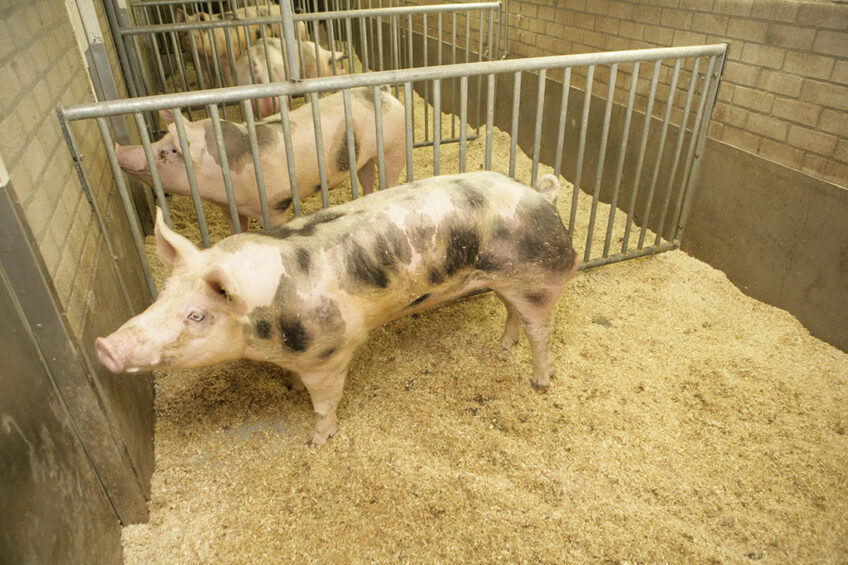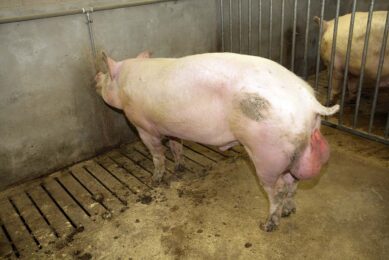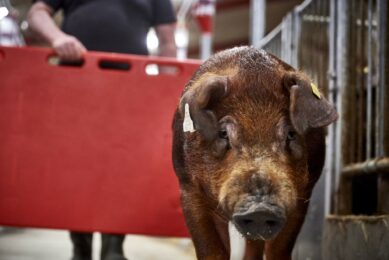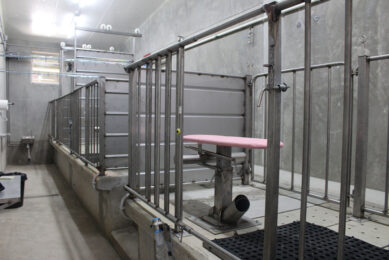Boars: A critical component in pig farm success

As an often overlooked subpopulation on farm, boars are a critical component in the success and productivity of a sow farm. What can be done to ensure optimal health and welfare for the boars? Dr Monique Pairis-Garcia lists 3 essential aspects.
As an often overlooked subpopulation on farm, boars are a critical component in the success and productivity of a sow farm. What can be done to ensure optimal health and welfare for the boars? Dr Monique Pairis-Garcia lists 3 essential aspects.
Boar studs are even more important for a commercial production system as the health and welfare status of boars used for semen-processing can have significant impacts on the economic sustainability of the operation.
From a welfare standpoint, boars and sows have many similarities. Basic husbandry needs remain, and housing environments should be designed to promote natural behaviour. However, there are some differences between the boar and sow. This article will touch on three welfare factors important to boars: housing, social behaviour and euthanasia.
Text continues underneath image
Making boar housing comfortable
Boars are typically housed in stalls to prevent unwanted mating and minimise injury associated with inter-boar aggression. However, most farms are set up with one type of standardised stall typically designed as a 2’×8’. Any pig housed in a stall should be able to lie down completely on its side and not need to have its head rest on the feeder, rear rest on the gate or be injured by the stall itself. Although this is typically not an issue for sows, we do tend to run into this problem with boars.
Boars often remain longer on the farm than sows and grow significantly larger; it is not uncommon for boars to weigh up to 800 lbs (363 kg). Given this, housing conditions should be carefully considered. Boars may be better off in pen systems that allow them to express freedom of movement and that provide adequate space as they continue to grow.
Evaluating boar social behaviour
In addition to housing, social behaviour should also be evaluated. Compared with sows, boars are less social animals and would naturally lead more solitary lives in natural environments. Prior to maturation it is common for young boars in the wild to develop small social groups of two to three, but it is very uncommon to see social groups in boars beyond the age of three. Housing should consider ways to minimise stress associated with boar-to-boar physical contact, physical location on-farm and nearby presence of sows. Housing should also ensure safe human–animal interaction so that caretakers working with boars are not injured.
Read more Expert Opinions at Pig Progress
An additional challenge: Boar euthanasia
Lastly, euthanasia can be an additional challenge when working with boars. As described by Kramer (2021), as boars mature, skull thickness increases, frontal sinuses expand and bony ridges are formed on the forehead. If the farm is relying on physical methods of euthanasia (i.e. captive bolt gun or firearm), equipment must have enough power to effectively penetrate the skull and cause unconsciousness, followed by death. As boar size and age vary on-farm, euthanasia methods must be in place that can effectively work on the largest, oldest boar.
Boar welfare is an important aspect to the industry and an area where we do not have a lot of literature to rely on. Further work is needed to better understand the biological, behavioural and affective states of the boar to optimise animal welfare.
Testing knowledge on boar stud welfare
Are you a veterinarian and want to test your knowledge on boar stud welfare? The American Veterinary Medical Association will be hosting a virtual Animal Welfare Judging and Assessment Contest and boar studs have been selected as one scenario! More information on the contest and how to compete can be found here.











